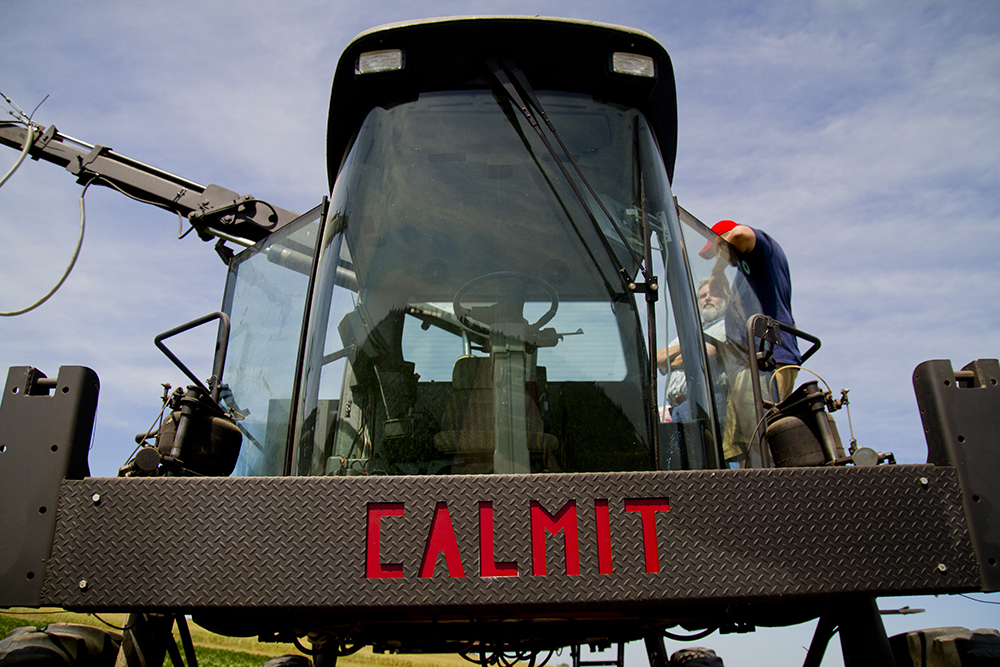
The Geography Student Organization at UNL will kick off 2012 Geography Awareness Week (Nov. 12-16) with a nod toward history, marking the 40th anniversary of the Center for Advanced Land Management Technology.
Geography Week will also feature a week-long photo competition, a trivia game, the annual Geography Bowl and two public lectures.
Don Rundquist, a geography and remote sensing professor in the School of Natural Resources, will present "40 years of Remote Sensing in Nebraska," at 3 p.m. Nov. 12 in Hardin Hall, room 901. Rundquist began his career as a graduate student at UNL in 1972 when a NASA grant helped create the Nebraska Remote Sensing Center—later renamed CALMIT in 1986.
Rundquist served as the center's director for 22 years, stepping down in 2008.
"He's been more of a mentor to me," said Brian Wardlow, the current director. "He's a legend in the field, no doubt about it."
During Rundquist's tenure, CALMIT established itself as one of the premiere remote sensing facilities in the nation. CALMIT established a track record of developing and adopting cutting-edge technologies, luring in some of the best and brightest scientists in the world, and training a generation of professionals in the fields of remote sensing and Geographic Information Systems.
Perhaps CALMIT's greatest strength is that it has the rare ability to perform sophisticated lab work and also make high-level field observations that can be linked to aircraft and satellite remote sensing observations. They can then use that information to develop practical remote sensing applications in the field with hand-held instruments, or by using sensors mounted on heavy equipment, aircraft, or satellites. Such capacity allows a more complete and detailed picture of agricultural and natural resources—Practical information that can be used by both researchers and decision makers to gain insight into what is happening with an individual plant, a field, a landscape, or much larger areas such as a state or the entire country.
"That's what distinguishes us," Wardlow said. "Not everybody has that lab ability to conduct both basic and applied remote sensing research across this full continuum of spatial scales."
More recently, researchers at CALMIT have developed algorithms that can decode the millions of bits of data that stream through monitoring satellites. Such applications help people get a better sense of things like groundwater levels, the consumption of water by plants or even the overall health of crops across the nation.
Rundquist said CALMIT's ability to measure crop health from space is largely the product of work by Anatoly Gitelson, who came to UNL in 2000.
"This guy is a world class scientist," Rundquist said of Gitelson. "A boon to the Center. To attract someone like that, we must be doing something right."
Gitelson developed crop yield and status models that are used around the world.
“Don Rundquist created a great infrastructure within CALMIT,” Gitelson said this summer. “What we’ve got at UNL is really incomparable.”
As it happens, Rundquist's first doctoral student, Lloyd Queen, will return to UNL to present Geography Week's second seminar. Queen, the director of the National Center for Landscape Fire Analysis at the University of Montana, will address the Hardin Hall Auditorium at 3:30 p.m. on Wednesday, Nov. 14. His talk is "Characterizing Fire-on-Fire Interactions in three Large Wilderness Areas Using the Monitoring Trends in Burn Severity (MTBS) Fire Perimeter Data."
Other planned events for Geography Awareness Week include:
• Photo Competition: Entrants will be on display in the Hardin Hall lobby all week. The winner will be determined by a student vote and a panel of judges. Results will be announced in room 228, 2 p.m. Nov. 16.
• Geography Wheel Game: Available each day of the week from 11 a.m. to 1 p.m. in the Nebraska Union. Participants spin a wheel and are quizzed about their geographic knowledge for a chance to win a prize.
• Geography Bowl: Held 6 to 9:30 p.m. Nov. 13 in the Hardin Hall Auditorium. More than 100 students are expected to turn out for this popular geography quiz tournament. Each member of the winning team will receive a geocaching kit, donated by Garmin and the UNL Geography Program. Free pizza and door prizes will also be provided by the Geography Program and various Lincoln establishments.
• Seminar: Lloyd Queen will address "Characterizing Fire-on-Fire Interactions in three Large Wilderness Areas Using the Monitoring Trends in Burn Severity (MTBS) Fire Perimeter Data," 3:30 p.m. Nov. 14 in the Hardin Hall Auditorium.